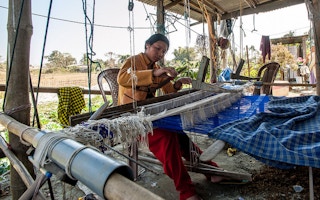Why is it so difficult to integrate gender into climate change responses? Even with increased emphasis from global policies, donors and funding streams, gender-responsive adaptation is still challenging.
Observers mention a number of hurdles such as limited resources, lack of information or deficient expertise —it seems that many practitioners lack an understanding of how to do it.
The underlying issue, though, is a refusal to accept that gender-responsive adaptation is better adaptation. We must therefore shift the way that we approach it.
Typical solutions to addressing gender in climate change include scattering into proposals and other documents terms like “women” and “equality”, or increasing the number of women beneficiaries in climate projects.
In practice, this fails to fundamentally change any part of the underlying design or implementation of a strategy or programme, and therefore has limited impact on ensuring true gender equality.
Climate change adaptation is inherently context-specific, and often based on changing behaviour.
Climatic changes vary based on the location, as do the social, economic and cultural conditions which define resilience and sustainability. Therefore, when it comes to integrating gender into adaptation, there is no single solution. This is, again, why the challenge is so real.
“
Giving them a voice or investing in their entrepreneurship can strengthen adaptation while reducing gender inequalities.
To put it simply, effective gender-responsive adaptation responds to the unique gender dynamics of the target area.
Since adaptation is already responding to the local context, it follows that we need to ensure this context takes into account the social and cultural elements that contribute to the gender context, too.
There is something to learn from a study, published by UNDP in 2016, done to examine the experiences of six diverse countries involved in gender-responsive adaptation to climate change under the Canada-UNDP Climate Change Adaptation Facility (CCAF).
Its findings, paired with experience from UNDP’s extensive portfolio of climate change adaptation projects around the world, provide insights about how to design and implement adaptation that takes gender dynamics into account.
Three main principles emerge from this work, which I believe can help guide gender-responsive adaptation efforts around the world.
Gender dynamics
The first is that gender is not just about women — it’s about the underlying gender dynamics.
Integrating gender into adaptation programmes has historically been focused on incorporating women, given their often systematic exclusion in decision-making and implementation. But this focus can lead to ineffective responses — where, for example, words or indicators related to women are included superficially, without changes to design or implementation.
Instead, it should be about understanding and addressing the local gender dynamics, which the CCAF study defines as having three elements: roles and responsibilities, gender-based differences in accessing resources such as land or finance, and gender power relations. Actively ensuring that both men and women’s interests are considered is critical.
For example, in Haiti, the CCAF project supported reforestation to address climate-induced sea level rise and storm surge. It made a concerted effort to include women as key decision-makers in the management committees that oversaw and drove this work, given their experience managing the land and feeding their families.
This proved valuable when deciding which trees to plant. Male and female members had different priorities: while the men wanted to plant trees to be used for charcoal and timber, both of which generate income, women preferred fruit trees that provide food.
The project recognised the value of both and provided a mix of the two trees. As a result, both needs were met.
Projects in other parts of the world addressed the needs of both men and women in a similar way – based on their existing dynamics. In several countries, men own and work the land to produce staple crops and during the off-season, they often migrate to find additional work, leaving women to take care of the household.
To address the impacts of climate change in concert with the underlying gender dynamics, several countries introduced a two-pronged approach that in many cases increased food security.
On one hand, they grow climate-resilient staple crops, using new water management practices such as drip irrigation. At the same time, small vegetable gardens are introduced to diversify income from vulnerable cash crops, while increasing overall household income and food security. These gardens are usually managed by women during the off-season or year-round.
Strengths, not vulnerabilities
The second principle is that gender is not always about vulnerability. Women as well as men have knowledge, skills and a spirit of entrepreneurship that programmes need to capitalise on.
One of the arguments often used to support gender-responsive adaptation is that women are the most vulnerable to impacts. In many cases this is true, given that women are often more dependent on climate-sensitive natural resources such as water and agriculture for their livelihoods, and may lack access to the financial resources or knowledge to cope with stresses.
But focusing on this vulnerability does not help to design and implement effective gender-responsive approaches, and sometimes reinforces inequalities.
It can also miss the opportunities that women provide as drivers of adaptation —they are often leaders in managing natural resources and have valuable knowledge and skills. Giving them a voice or investing in their entrepreneurship can strengthen adaptation while reducing gender inequalities.
Take an example from Guatemala: in Aldea el Triunfo, Maria Luisa Chaca decided to organise a group of women producers to collectively receive training on improving their chocolate production and marketing.
A project supported by UNDP helped back groups like Maria’s to access training on storage and processing and purchase equipment, and even set up a storage centre.
Conscious decisions
The third principle is that gender-responsive approaches are not complicated, costly, or time-consuming. They are simply about changing the way of approaching project design and implementation processes.
Every decision made when designing and implementing interventions should consider local dynamics, many of which touch on gender issues — whether explicitly or not.
This means we are already making countless decisions that have impacts on gender. The trick is to be more thoughtful and conscious of these decisions, and recognise the opportunities they present to address underlying gender dynamics.
For example, when considering the location of a new solar pump or the time of day that training sessions will be held, questions arise about who will be using the water and with what purpose. Or who are we targeting to come to the training, and what are their other commitments?
In essence, gender-responsive adaptation approaches are simply better adaptation approaches.
But we can go one step further: being gender-responsive can also contribute to transforming gender relations. According to the CCAF study, in Sudan and Niger women gained more decision-making power in their homes after the project enhanced their role as food providers and income generators.
Empowerment is a key component of resilience.
As the Paris Agreement comes into effect, adaptation will be important for implementing countries’ nationally determined contributions (NDC). The three principles outlined here should be taken into account when designing NDC frameworks to be gender-responsive.
Jennifer Baunwoll is project coordinator for the UNDP-Canada Climate Adaptation Program. She can be contacted on Twitter @jebaumwoll
This piece was originally published by SciDev.Net’s Latin America & Caribbean desk.


















